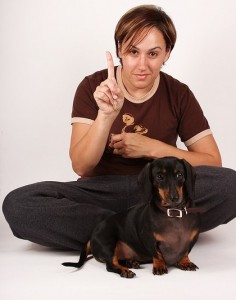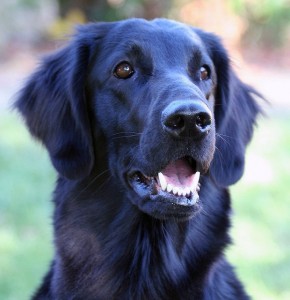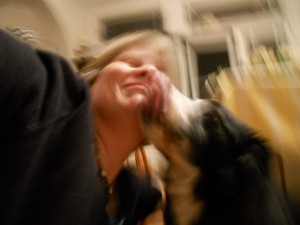Good training can’t happen without failures but too many can make it frustrating and no fun for either the human or the dog. If failures are going to happen, why not learn from them and use them to make things better? You only fail if you didn’t learn something from the experience.
 Mark and Reward training depends upon encouraging your dog to perform a behaviour by rewarding them when they give you the behaviour you are training. It’s a simple process. The dog does the behaviour, you use a marker signal to tell them “That’s Right!” and then you reward them with food, play, or something else they really like. But nobody gets it right every single time.
Mark and Reward training depends upon encouraging your dog to perform a behaviour by rewarding them when they give you the behaviour you are training. It’s a simple process. The dog does the behaviour, you use a marker signal to tell them “That’s Right!” and then you reward them with food, play, or something else they really like. But nobody gets it right every single time.
To many trainers who come to Mark and Reward from more traditional methods of dog training, the remarkable speed with which they can train behaviours can be very gratifying. Reward based training produces very positive and enthusiastic attitudes in the dog as well; she becomes eager to try new things and even look forward to training. It’s a method that is very rewarding for both the trainer and the dog.
As in all learning, not every attempt results in success. Failures can come in varying degrees and in many forms. As trainers we strive to make our dogs as successful as we can. It speeds the learning process and it’s just more fun that way. When our dog doesn’t succeed during a training session, it can be frustrating. We may need to rethink our approach or ask less before rewarding and moving forward. We must also consider the emotional impact of “failure” on our dog.
What is Failure to Our Dog?
That’s an interesting question. Since our dog doesn’t know what the final behaviour we are looking for is when they are just learning it, how do they know if they failed to do it? The answer is simple; we tell them with our disappointment. As trainers, we are invested in the process. So it is understandable that we would show some disappointment when things don’t work.
Not that we are necessarily disappointed in our dog, but more that we are disappointed that our training approach is not producing the results we had hoped. Remember that our dogs are master observers. A drop of the shoulders, a wave of the hand, or an exasperated sigh can all be clear indicators that something is “not ok” with Mom right now. And that can be an aversive to your dog.
Our dogs have delightfully simple thought processes. When we get upset or disappointed, they have no way to know if you are upset at yourself, the situation or them. Dogs are wonderfully self-centered creatures. If you are upset, you must be upset at them.
Experienced Mark and Reward trainers might now be thinking, “I don’t do any of that. I simply ignore the incorrect behaviour and help them try again.” While this may not be as confusing or upsetting as a larger reaction from their human, that lack of response can definitely be an aversive. At a minimum, the opportunity for a reward has passed without good results!
Failing Is Important
One of the important truths about learning is that sometimes you need to understand what “wrong” is in order to have a clear picture of what “right” looks like. A good example of this is teaching a dog to weave through poles for the sport of dog agility. The rules of that game specify that the dog must enter the weave poles with the first pole on their left. Entering with the first pole on the dog’s right is a fault. So this is a simple binary choice – pole on left is correct and pole on right is not.
 In training weave poles with my dogs, it’s necessary for them to discover that they do not get rewarded for entering the poles with the first pole on their right. Only an entry with the poles on the left pays off. When they are “right”, they get a reward and when they are “wrong” nothing happens and they get another try. What would happen if my dogs never tried to start on the “wrong” side?
In training weave poles with my dogs, it’s necessary for them to discover that they do not get rewarded for entering the poles with the first pole on their right. Only an entry with the poles on the left pays off. When they are “right”, they get a reward and when they are “wrong” nothing happens and they get another try. What would happen if my dogs never tried to start on the “wrong” side?
That’s an interesting question. There are those in the Positive Training community who advocate what they call “error-less” learning, a process where training is designed to have the dog never fail at an exercise by careful progression and precise training. The idea is to minimize the aversive effects of failure and missing out on a reward. But there is an inherent flaw in this idea. Mark and Reward training, in fact almost all positive training, encourages the dog to be pro-active and to “try things out” for themselves.
In our example, it seems very unlikely that the dog will never try to enter the weave poles from their right. They might end up there by accident or even just try it to see what happens. It seems a little optimistic to me to hope that any number of successful repetitions would eliminate any chance of the dog trying out another approach that might be incorrect.
And weave poles performance is a simple two-choice behaviour. There is a “right” way and a “wrong” way. Other behaviours may have more than one incorrect variation your dog may try. A dog can incorrectly “Stay” in any number of ways, for example. It seems inevitable that your dog will fail during your training at some point and that’s a good thing! They are learning what doesn’t pay off. And that can speed learning too.
Failure Is Information
A failed training attempt doesn’t just give your dog some information about what’s not working. There is a great deal of information in a failure for us as trainers too. How and when our dog fails at a behaviour can tell us a great deal. If we’re observant, a failure can show us exactly how to adjust our training to address a specific issue to get things back on track.
When my dog fails at something in training, it tells me that perhaps she doesn’t understand what I’m asking for. How she fails may give me clues to where her confusion may be and that gives me an opportunity to adjust my training approach. For example, if I don’t drop my hand all the way to the floor, my puppy fails to lie down. Could it be that she’s too focused on looking for a treat she thinks is in my hand? Perhaps she doesn’t understand that it’s the “lying down” that I’m marking at all and is simply following my hand.
If you are a good observer during training, there is more information available. If you’re looking for a behaviour, you’re already watching your dog. How do they look to you? Tired? Distracted? Frustrated? Do they look like they’re trying to work out what you want? Your dog’s emotional and mental state are just as important to your training as getting results. Sometimes it’s just better to take a break and come back to things later.
 Seeing Is Believing, Goldilocks
Seeing Is Believing, Goldilocks
When I work with students learning to train their dogs, I talk about the need for failure in good training. I often to refer to the fairy tale of Goldilocks who found 3 beds in the bear’s cottage in the woods – one too hard, one too soft, and one just right. It can be difficult to understand what our dog does and does not yet understand about what we are trying to teach. Using that “Goldilocks” approach can help. What is too much? What is not enough? If we know that, it’s a lot easier to find out what’s “just right!”
Paying attention to our dog and being observant are key elements in good training. We can’t be focused only on seeing the results we want. We have to be able to see everything that is going on. And that’s a skill that we can improve with practice.
One great way to improve your observation skills is to use video to record your training sessions. It doesn’t have to be high quality video and most cell phone video cameras would work just fine. It provides a way for us to watch a training session after it’s over to see what we might have missed. As you learn what to look for, you will find that your “real time” observation gets better and better.
Balancing Success and Failure
A general rule we use in our training is a 70/30 success to failure rate with our dogs when training a new behaviour. We’ve found that this is a good mix because my dog’s overall experience is weighted heavily toward success and that’s fun. She succeeds at least twice for every mistake she might make. So she gets rewarded at least twice as much as she doesn’t.
Another rule we use is that we don’t mark failures. We try to move quickly and calmly on to another try without making a big deal out the failure for our dogs. We quietly observe, make a note, adjust our training, and try again. Not earning a reward is a mild aversive. There is no need to make a bigger deal of it than that.
As a reminder to ourselves as trainers, we also use the “Rule of 3” to keep our dog motivated. That rule is simply that if our dog fails twice in a row, the third behaviour MUST be a success. Sometimes that means asking for a different behaviour that they know well and are sure to do properly. Again, the goal here is to keep the rewards frequent enough to keep our dog motivated and to minimize the bad effects of confusion and failure.
Another aspect of this is working with your dog to make them better able to handle stress and frustration. There is a lot we can do to prepare our dogs to cope. My previous article A Balanced Dog: Coping Skills and Stress Management covers that topic in detail.
Failing Toward Success
 Failures happen. That’s just the way of things. As dog trainers, we would do well to recognize failure as part of the learning process and find ways to use that to our advantage. There is a tremendous amount of information available to us when our training efforts break down. It’s important for us to stay observant and learn from what we’re seeing even if it isn’t exactly what we wanted. It tells us how to adjust to make our training better.
Failures happen. That’s just the way of things. As dog trainers, we would do well to recognize failure as part of the learning process and find ways to use that to our advantage. There is a tremendous amount of information available to us when our training efforts break down. It’s important for us to stay observant and learn from what we’re seeing even if it isn’t exactly what we wanted. It tells us how to adjust to make our training better.
Too often our human emotions can get in the way. Too often we take our dog’s failure to perform as we want as some negative reflection on us as trainers and as dog owners. In reality, our dog may just be telling us that they don’t understand. And if we’re paying attention, they may even be telling us exactly what they don’t understand. The trick is not to get lost in the failure. See it, make a note, adjust our training and move forward.
Succeed more often than you fail. Forgive your dog and forgive yourself when failures happen. And most of all keep it fun and rewarding for both of you.
Until next time, have fun with your dogs!
Photo credits –
Let’s try again! – Cordey 2008 from Flickr
Attentive – Giori 2006 from Flickr
Weave Pole Training – Petra Wingate 2005
Partners – Rochelle, just rochelle 2011 from Flickr




[…] edition of the article Training Your Dog – Failing Toward Success from the Life As A Human online magazine website. You can visit Life a a Human to find this and […]